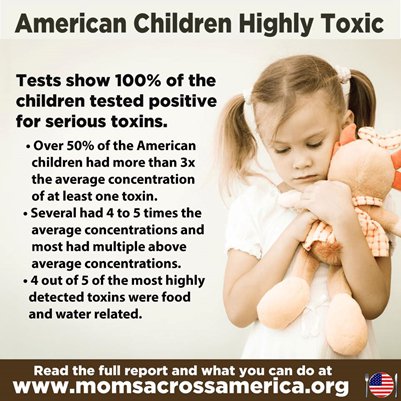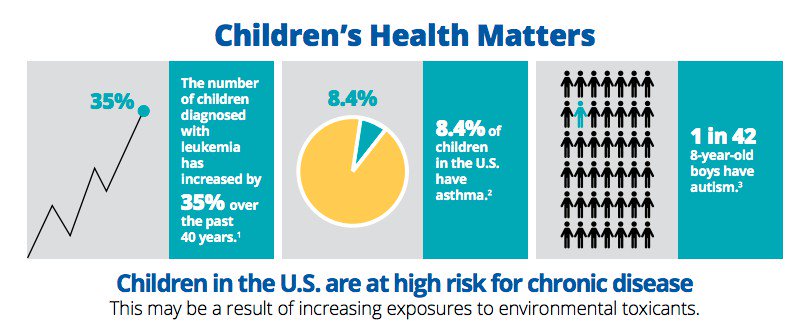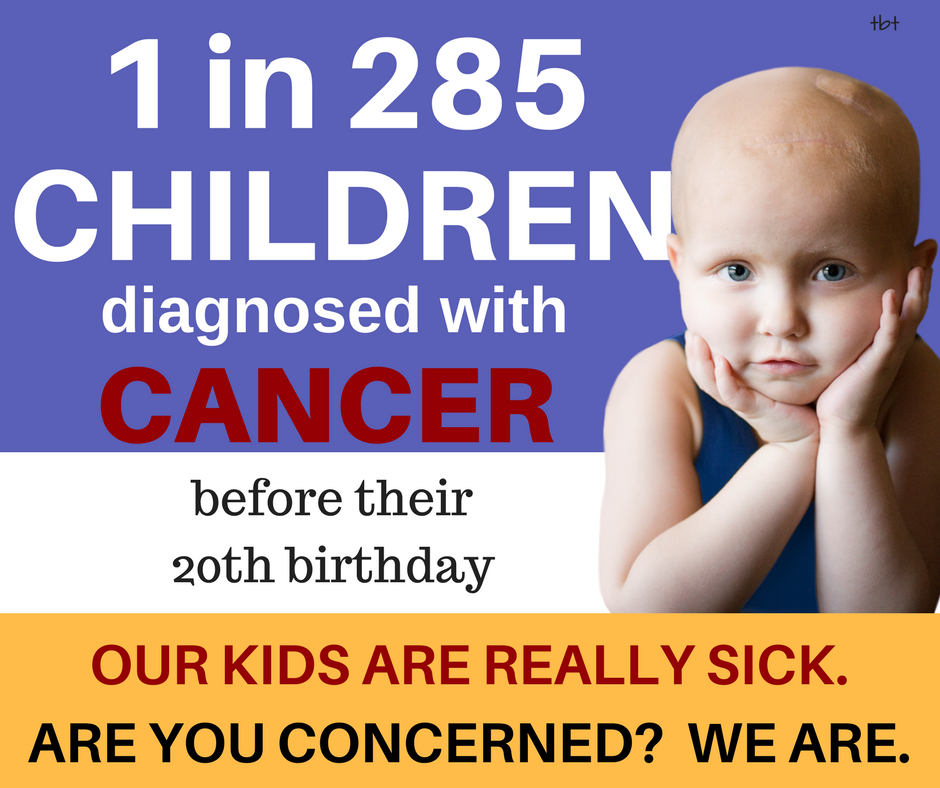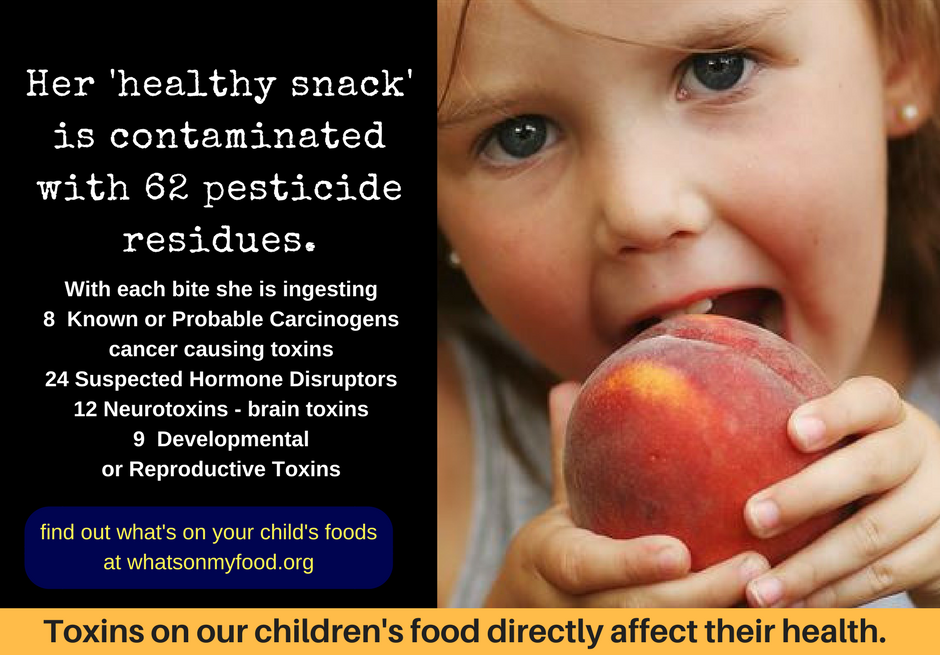Two Landmark Cases: Is the Toxic Tide Turning In Favor Of Our Kid’s Health?


Our children are exposed to high levels of pesticides and herbicides ingested and inhaled daily, which is negatively impacting the health of an entire generation. Two significant court rulings today in favor of protecting our children and the environment from toxins. Over a decade ago an analysis of federal data by the Environmental Working Group (EWG) revealed that 1 million American children age 5 and under consume unsafe levels of a class of pesticides that can harm the developing brain and nervous system. Chlorpyrifos, a chemical sprayed on food crops, is a known neurotoxin, especially for children. It is one of the most widely used pesticides in the U.S. based on the results of three federally funded observational studies; the EPA was expected to phase out all remaining uses of the pesticide due to evidence that it caused long-term learning problems and IQ loss in children.
EPA revoked the ban in 2017. The U.S. Court of Appeals for the Ninth Circuit has ordered the Environmental Protection Agency to ban chlorpyrifos, a widely used pesticide linked to learning disabilities in children, within 60 days.
“EPA has no basis to allow continued use of chlorpyrifos, and its insistence in doing so puts all children at risk,” said Melanie Benesh, an attorney for the group Environmental Working Group. “By requiring the EPA to finally ban chlorpyrifos, the Ninth Circuit is ensuring that the agency puts children’s health, strong science and the letter of the law above corporate interests.”
The risk for toxic exposure in our children increases due to high levels of pesticides sprayed in their homes, schools and day care centers, because the EPA’s current standards are based on levels considered safe for adults. Children’s bodies are smaller, their systems still developing. It is outrageous that the agency’s tasked to protect our children ignore their responsibility.

This week a jury agreed that Monsanto hid cancer danger of the weed-killer for decades. Labeled as a possible carcinogenic by the World Health Organization, Glyphosate is the number one product used for weed control in homes and schools. Johnson was a groundkeeper at a San Fransisco school district. He is said to have used Monsanto’s glyphosate weed killer on school grounds almost 30 times per year. He claims that two accidents caused him to be “doused” in the company’s weed killer. During the trial, the juror was presented with previously undisclosed information about how the body absorbs glyphosate and the dangers associated with the other ingredients that make up the Roundup formulated product. The jury agreed that Monsanto hid cancer danger of the weed killer awarding Mr. Johnson $289.2 million dollars.
Could this be a sign of the toxic tide turning?
Jury Orders Monsanto/Bayer to pay $289.2 million to Cancer-stricken Grounds Keeper. Jury agreed on all counts that Monsanto hid cancer danger of weed-killer for decades
The jury awarded Johnson 289.2 million dollars! 4000 other plaintiffs are waiting to sue Monsanto and 10,0000 are expected by the end of the year. Surely this decision has Bayer, who now owns Monsanto, reconsidering whether or not to continue to sell glyphosate-based products.Thousands of individuals from across the country have filed lawsuits against Monsanto alleging exposure to Roundup weed killer caused them to develop non-Hodgkin lymphoma. In addition to the federal MDL in San Francisco, people from California, Nebraska, Delaware and Missouri have filed claims in state courts making similar allegations.

The first trial in the Roundup cancer litigation is a state court case filed in San Francisco Superior by plaintiff DeWayne Johnson, who is represented by The Miller Firm, LLC. The Johnson case will begin on June 18, 2018. Another state court case will be heard in St. Louis, Missouri in October 2018.
Since the beginning of the litigation against Monsanto, the law firm of Baum, Hedlund, Aristei & Goldman and the other firms leading the litigation have led the fight to declassify court documents that consist of internal Monsanto studies, company reports, emails, text messages, and other memoranda.
These documents, known as The Monsanto Papers, include information that Monsanto does not want the public to see. They allow the public to look behind the curtain of secrecy that normally shrouds ongoing litigation and see firsthand how Monsanto has engaged in ghostwriting, scientific manipulation and collusion with regulatory agencies (including the EPA). The documents also include previously undisclosed information about how the body absorbs glyphosate and the dangers associated with the other ingredients that make up the Roundup formulated product.
This week the jurors agreed with the plaintiff and the scientific evidence to back their claims that glyphosate, the active ingredient in Roundup, causes non-Hodgkin lymphoma (NHL).
Chlorpyrifos Court Decision
HuffPost: Court Orders EPA To Ban Chlorpyrifos, A Pesticide Linked To Brain Damage In Kids
In a joint letter to Pruitt in June, the American Academy of Pediatrics and Environmental Working Group, a nonprofit advocacy group, said they were “deeply alarmed” by his decision. “EPA has no basis to allow continued use of chlorpyrifos, and its insistence in doing so puts all children at risk,” they wrote. Reprinted by AOL and Yahoo! News.
Washington Examiner: Federal appeals court orders EPA to ban pesticide
“Today’s court decision is huge victory for public health, especially that of children,” said Melanie Benesh, an attorney for the group Environmental Working Group. “By requiring the EPA to finally ban chlorpyrifos, the Ninth Circuit is ensuring that the agency puts children’s health, strong science and the letter of the law above corporate interests.”

Learn more about the 1998 report, Overexposed: Organophosphate Insecticides in Children’s Food, is in response to the Food Quality Protection Act, passed unanimously by Congress in 1996, that requires all pesticides to be safe for infants and children.




